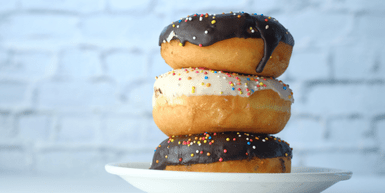21st May 2025
Cravings After Bariatric Surgery: Why They Happen & How to Manage Them
Cravings—especially for sugar, carbs, or even alcohol—are one of the most common challenges bariatric patients face after surgery. They can feel overwhelming, defeating, and even physical. In fact, cravings are one of the leading causes of self-sabotage when it comes to maintaining a healthy bariatric lifestyle.
Understanding the why behind cravings is the first step toward learning to manage them. Cravings don’t go away entirely, but with the right tools and strategies, they can be significantly reduced—and controlled.
Why Are Cravings So Powerful?
Cravings are more than just fleeting thoughts. Many people describe them as a nagging, almost “devilish” voice in their head—or a full-body sensation they can’t ignore. These urges can derail motivation, trigger feelings of guilt, and make people feel powerless in their journey.
But cravings aren't just about willpower. They are often driven by physiological imbalances, habits, emotional needs, or even gut health issues. Let’s break down some of the most common root causes of cravings and what can be done to address them.
1. Unbalanced Blood Sugar & Insulin Spikes
After bariatric surgery, patients experience faster rises and falls in blood sugar due to altered digestion and absorption. When someone consumes sugar or starch (like bread, pasta, or crackers), the body may respond with a sharp insulin spike. This can lead to a rapid blood sugar crash, triggering intense cravings for more sugar or carbs.
Symptoms of a blood sugar crash may include:
-
Lightheadedness
-
Shakiness
-
Nervousness
-
Fatigue
-
An overwhelming urge to eat again
The fix:
Balance blood sugar by eating protein-rich or fiber-rich meals and avoiding sugar or starch in isolation. If you’re going to enjoy a treat, eat it after a balanced meal to help prevent the rapid rise and fall in blood sugar that fuels cravings.
2. Loving Sweets & Struggling with Moderation
Some individuals find they’re simply drawn to sweet foods and have difficulty stopping at just one bite. This becomes a cycle: sweets enter the house, get eaten quickly, lead to feelings of failure, and can show up on the scale.
Helpful strategy:
Remove highly tempting foods from the environment and replace them with healthier alternatives. Some satisfying swaps include:
-
Fresh berries with a dollop of Greek yogurt or whipped cream
-
Unsweetened chocolate or caramel teas with a splash of cream and monkfruit/stevia
-
Keto-friendly desserts using cream cheese or nut butters
-
A few squares of dark chocolate with coconut or nuts
Over time, the taste buds can adjust, and the emotional pull of sweets begins to fade.
3. Possible Yeast (Candida) Overgrowth
Intense sugar cravings can sometimes signal an imbalance in the gut—specifically, yeast overgrowth. Candida, a common yeast, thrives on sugar. When it’s out of balance, it can cause the body to crave sugar in a very real and physiological way.
You might suspect a yeast overgrowth if you experience:
-
White-coated tongue
-
Recurrent yeast infections
-
Skin rashes
-
Fungal toenail issues
-
Brain fog or fatigue
Treatment may involve antifungal herbs or medications, probiotics, and cutting off sugar (yeast’s food supply). If you suspect this might be a factor, speak with a healthcare provider about next steps.
4. Using Food to Cope with Emotions
Let’s not forget—many of us turned to food for comfort, distraction, or emotional support long before surgery. This emotional connection doesn’t just disappear. Stress, sadness, anxiety, and even boredom can trigger cravings for carbs or sweets due to the temporary dopamine (feel-good chemical) boost they provide.
What helps:
-
Journaling emotions before reaching for food
-
Talking to a trusted friend or counselor
-
Engaging in a support group
-
Creating new coping rituals (like going for a walk, drinking tea, or deep breathing)
Unprocessed emotions often lead to unhealthy food choices. Finding a non-food outlet is a critical part of long-term success.
Cravings are normal—and they don’t make anyone weak. But understanding where cravings come from and putting tools in place can dramatically reduce their power. Whether the root cause is blood sugar imbalance, emotional eating, gut health, or simply old habits, there are ways to manage cravings and reclaim control.
*These statements have not been evaluated by the Food and Drug Administration. This product is not intended to diagnose, treat, cure or prevent any disease.
This blog is for educational and informational purposes only. This information is not intended to replace professional medical advice, diagnosis, or treatment. You should not use this information to diagnose or treat any health problems or illnesses without consulting your medical practitioner. Always seek the advice of your own medical practitioner or other qualified health provider with any questions you may have regarding your specific health situation.

